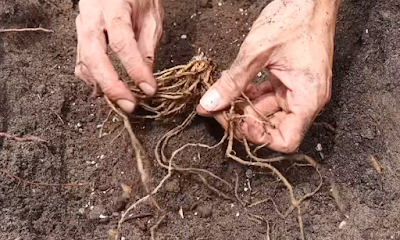Information about growing Asparagus
What is Asparagus?
Asparagus (Asparagus officinalis) is a perennial vegetable that is known for its tender and flavorful spears. It is one of the first crops to be harvested in spring and can continue producing for over 15 years once established. Asparagus is rich in vitamins A, C, and K, and provides essential minerals such as iron and folate.
How Easy or Difficult is It to Grow Asparagus?
Growing asparagus requires patience, as it takes a few years before it starts yielding a substantial harvest. However, once established, asparagus is relatively low-maintenance and provides yearly harvests with minimal effort.
Since it is a long-term crop, site selection and soil preparation are critical. Asparagus prefers well-drained, nutrient-rich soil with a slightly acidic to neutral pH. It requires diligent weed control, particularly in the first few years, but beyond that, it thrives with little intervention.
Best Season and Sun Requirements for Asparagus
Asparagus is best grown in cool to temperate climates and should ideally be planted in early spring, when the soil is workable and frost risks are minimal. In regions with mild winters, asparagus can also be planted in late fall.
This perennial vegetable thrives in full sun, requiring at least 6-8 hours of direct sunlight per day. Lack of sunlight can result in weak, spindly spears and reduced yield. If planting in a partially shaded area, ensure it gets maximum exposure to morning sunlight.
Temperature-wise, asparagus grows well in 55-85°F (13-29°C). The spears emerge quickly when the soil temperature reaches around 50°F (10°C), and warm conditions promote rapid growth. However, excessive heat can cause premature bolting.
Time from Planting to Harvesting
Growing asparagus requires patience, as it takes 2-3 years to reach full production. The first year is focused on root establishment. In the second year, only a few spears should be harvested to allow the plant to strengthen. By the third year, the plant will produce a significant harvest.
The first year involves planting crowns (one-year-old roots) or asparagus seeds. Crowns provide a head start and result in a harvestable crop sooner than seeds, which take an extra year to establish.
Planting the Asparagus crown
After reaching maturity, asparagus spears can be harvested for 6-8 weeks each spring. The spears should be cut when they are about 6-9 inches tall and before they start to fern out. Regular harvesting encourages continuous production.
Is Asparagus Perennial or Seasonal?
Asparagus is a perennial plant, meaning it regrows every year. Unlike seasonal vegetables that must be replanted annually, asparagus crowns continue producing spears for decades, making it a valuable addition to home gardens.
Pests and Organic Pest Control
Several pests can attack asparagus plants, leading to damage and reduced yield. Here are the common pests and organic solutions to manage them:
1. Asparagus Beetles
Both the common asparagus beetle and the spotted asparagus beetle feed on spears and ferns. They cause visible scarring and defoliation.
How to handle asparagus beetles ?
- Handpick beetles and larvae off plants.
- Encourage natural predators like ladybugs and parasitic wasps.
- Apply neem oil or insecticidal soap to control infestations.
2. Aphids
Aphids suck sap from asparagus plants, causing yellowing and stunted growth.
How to handle aphids ?
- Spray plants with a mixture of water and mild soap.
- Introduce beneficial insects such as lacewings and hoverflies.
- Use organic neem oil as a preventive measure.
3. Cutworms
These pests cut young asparagus spears at the base. How to handle cutworms ?
- Place collars around young plants to deter cutworms.
- Encourage birds in the garden to help control populations.
Organic Fertilizer & Nutrient Needs
Asparagus benefits from a nutrient-rich soil supplemented with organic fertilizers. The best natural fertilizers include:
- Compost: Apply a layer of rich compost annually to maintain soil fertility.
- Well-Rotted Manure: Cow or chicken manure provides essential nitrogen.
- Bone Meal: Enhances root development and strength.
- Seaweed Extract: Improves disease resistance and adds essential micronutrients.
Apply fertilizer twice a year: in early spring before spears emerge and in fall after the harvest.
Expected Yield per Plant
Mature asparagus plants can produce 20-25 spears per season. A well-maintained bed with multiple plants can yield up to 1-2 pounds per square foot annually.
Plant Spacing Requirements
Space asparagus crowns 12-18 inches apart in rows that are 3-4 feet apart. Proper spacing allows adequate root development and prevents overcrowding.
Ideal Soil for Asparagus
Asparagus thrives in well-draining, sandy loam soil with a pH of 6.5-7.5. Heavy clay soil should be avoided as it retains too much moisture, leading to root rot.
Pros and Cons of Growing Asparagus
| Pros | Cons |
|---|---|
| Long-term harvest (up to 15 years) | Takes 2-3 years to establish |
| Low-maintenance once mature | Requires well-prepared soil |
| Rich in nutrients and antioxidants | Susceptible to asparagus beetles |
| Grows well in organic settings | Needs space due to spreading roots |
Companion Plants for Asparagus
Good companion plants for asparagus include:
- Tomatoes: Repel asparagus beetles.
- Parsley: Enhances growth and improves flavor.
- Basil: Deters common pests.
Plants Not to Grow with Asparagus
Some plants compete for nutrients or attract harmful pests when grown near asparagus:
- Onions and Garlic: Compete for nutrients, stunting asparagus growth.
- Potatoes: Disrupt asparagus root development.
- Carrots: Attract similar pests, increasing the risk of infestation.
Blogs about growing Asparagus
- Growing Asparagus - Martha
- How to Grow Asparagus
- How to grow asparagus: a simple guide to planting and harvesting
- How to Grow Asparagus 101
- Growing asparagus in home gardens























